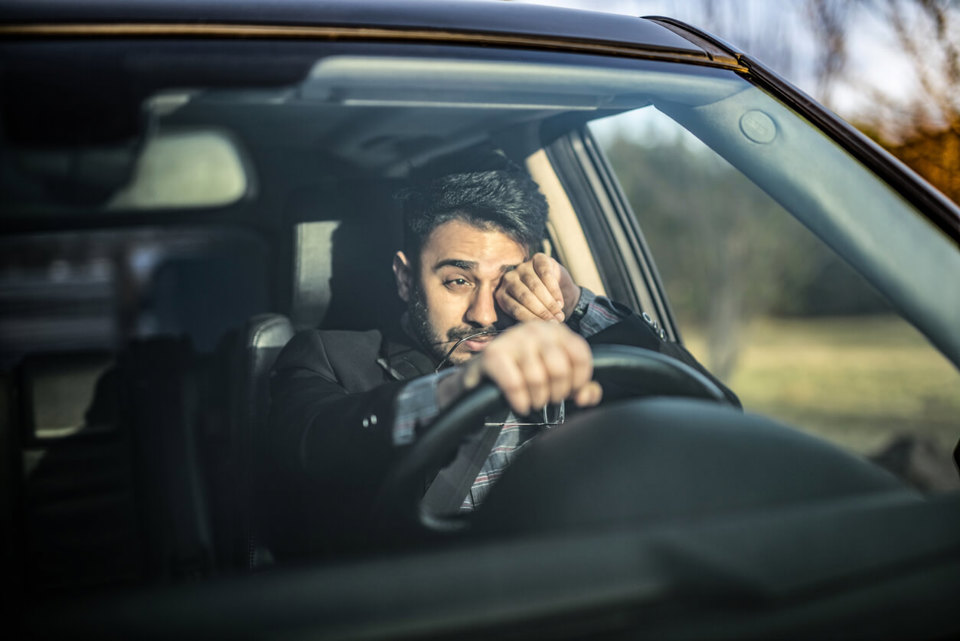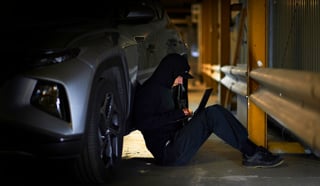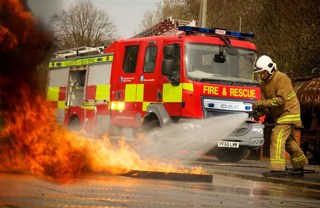Thousands of company car and van drivers are putting themselves and other road users at risk through tired driving, research suggests.
The Department for Transport (DfT) estimates that fatigue is a contributory factor in up to 20% of all road traffic collisions, while around 40% of sleep-related incidents involve commercial vehicles.
Nicholas Oscroft, a sleep specialist at Papworth Hospital, said: “If you fall asleep behind the wheel, it’s going to be a bad accident.
“You will not react, you will not brake. You will have a high velocity incident and the risk of being killed is significantly higher.”
Government figures also reveal that around a third of people in the past 12 months said they had driven while feeling tired.
Oscroft told delegates at the recent Fleet Van Summit that, considering 72% of collisions are due to driver error – with the most common reason given that the driver failed to look properly – fatigue could be a contributory factor in many more collisions than previously thought.
However, many employers are oblivious to the scale of the problem, leaving them open to possible prosecution for not fulfilling duty of care obligations.
It was an issue that the Rail Safety and Standards Board (RSSB) decided to investigate after concerns were raised by company car and van drivers working in the industry.
Ian Moreton, programme manager, safety management systems at RSSB, said: “We had an increasing number of
confidential reports from rail workers who were concerned about long hours, travel distances, lack of appropriate information, variable shift patterns and concerns about their safety getting to and from sites.”
The industry, which involves more than 75,000 drivers either in maintenance or the transport of goods, had suffered several serious and fatal incidents in the past 12 months alone.
However, Moreton said: “We felt there was significant under reporting in the rail industry for fatigue-related issues.”
RSSB aims to offer specialist support and advice based on a safety management information system database that holds 1.5 million safety-related entries.
But its data was suggesting only a 3% road risk, while the Royal Society for the Prevention of Accidents (RoSPA) put this figure at 30% in similar industries.
“We felt quite strongly that it was actually a lot higher than that,” said Moreton.
The RSSB ran a confidential survey across the industry and it became quickly apparent that they were right to be suspicious.
“We didn’t fully understand the problem,” added Moreton. “There were lots of near misses, injuries and even fatalities that weren’t being recorded.
“It was also clear from the survey that fatigue was the biggest risk factor.”
Health and Safety legislation applies to on-the-road activities, but excludes commuting to and from work.
As a result, employers must assess and manage the fatigue risk involved in use of the road for work purposes by their employees.
However, Moreton, who was a health and safety manager before joining RSSB, said: “I used to find a lot of companies stumble into this area when they experience the worst-case scenario – that’s simply not good enough.
“There is an employer responsibility for setting the tone and giving the right tools, assessing, monitoring and supporting staff, but there’s also an employee and an individual responsibility.”
As a result of its findings, RSSB produced a DVD called Red 35, which focuses on the topic of tired driving, along with a range of leaflets and posters.
It’s hoped it will kick-start a conversation within organisations between employees and employers that had been previously lacking.
There can be many factors which lead to tired driving, but Oscroft says that the most common reason is the modern world. People simply don’t get enough sleep.
However, sleep apnoea is becoming a more common problem as levels of obesity rise. It results in sufferers having extremely poor quality sleep.
Oscroft said: “It’s going to be a growing problem as the rates of obesity increase resulting in more sleepy drivers on the road.”
He added: “It’s very important that employers carry out a risk assessment and look at the training of their drivers.
“You can look at the vehicles to ensure they are as safe as they can be, but probably more important you can look at scheduling and work hours.
“For example, there are ways at looking at shift work patterns to make them less punitive.”

























Jon Danzig - 13/10/2013 13:41
Usually the DVLA will let drivers keep their license if treatment is successful, as it is in most cases. I now won't sleep without my CPAP machine that for me is 100% effective at treating both sleep apnoea and snoring. However, my journey to being diagnosed was bizarre. I have today published the story of my overnight sleep test at an exclusive London hospital usually frequented by the Royal Family. It was a comical disaster and I didn't sleep a wink. See, 'Sleepless in London' http://jondanzig.blogspot.co.uk/2013/10/sleepless-in-london.html Short URL: goo.gl/CPWYbP